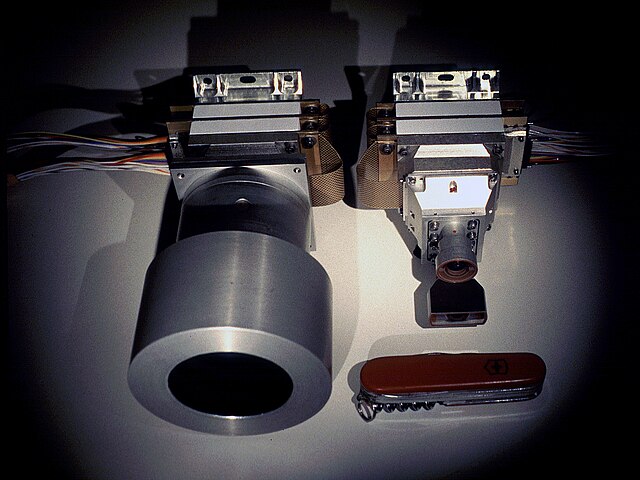The Mars Climate Orbiter was a robotic space probe launched by NASA on December 11, 1998, to study the Martian climate, Martian atmosphere, and surface changes and to act as the communications relay in the Mars Surveyor '98 program for Mars Polar Lander. However, on September 23, 1999, communication with the spacecraft was permanently lost as it went into orbital insertion. The spacecraft encountered Mars on a trajectory that brought it too close to the planet, and it was either destroyed in the atmosphere or escaped the planet's vicinity and entered an orbit around the Sun. An investigation attributed the failure to a measurement mismatch between two measurement systems: SI units (metric) by NASA and US customary units by spacecraft builder Lockheed Martin.
Artist's conception of the Mars Climate Orbiter
MARCI camera
Mars Climate Orbiter during assembly
Mars Climate Orbiter undergoing acoustic testing
The climate of Mars has been a topic of scientific curiosity for centuries, in part because it is the only terrestrial planet whose surface can be easily directly observed in detail from the Earth with help from a telescope.
Martian morning clouds (Viking Orbiter 1, 1976)
Mars – most abundant gases – (Curiosity rover, Sample Analysis at Mars device, October 2012)
June 6, 2018
November 25, 2012








